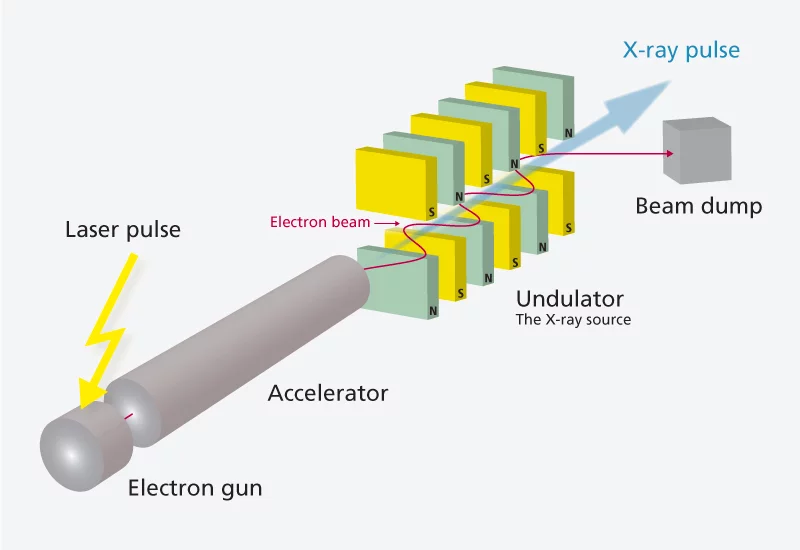Inside the SwissFEL, electrons will be accelerated to almost the speed of light, then forced along a curved pathway by very powerful magnets, emitting X-ray light as they travel. SwissFEL is thus composed of an electron source (which generates the electron beam), an accelerator, and an undulator in which the electrons are guided along a wave-like path. An experimental area lies at the end of this track, where the light produced will be used to perform experiments.
When electrically charged particles are forced along a curved path, they generate electromagnetic radiation. Whether these are radio waves, visible light or X-rays depends on the exact conditions. The SwissFEL X-ray laser will generate extremely short bursts of X-ray light with laser-like properties. These bursts will be emitted by forcing very fast electrons to follow a wavy path using ultra-strong magnets.
The SwissFEL will consist of three essential components:
- An electron source, which will generate packets of free electrons.
- An accelerator, which increases the electron’s kinetic energy to the required value.
- An undulator section, in which strong magnets deflect force the electrons back and forth causing them to emit the X-ray pulses.
In addition, there are also optical components, with which the X-ray light is filtered and focused, and experimental stations, where the measurements will actually be performed. Once the electrons have emitted their X-rays in the undulator section, they are no longer required, and are captured in a beam dump.
The entire SwissFEL facility will be approximately 740 metres in length. Of this, 550 metres will be taken up by the electron source and the accelerator, 100 metres by the undulator section, with the remaining 90 metres housing the X-ray optics and experimental stations.
What makes X-ray light generated at the SwissFEL so special is that the electron beam not only radiates light, but this light, in turn, influences the electron beam. Through this interaction, the initially weak X-ray beam is strongly amplified – specialists refer to this as an "self-amplified spontaneous emission (SASE)".
Facilities that generate laser light using the SASE are called "Free-Electron Lasers" (FELs), because the electrons move through a vacuum, not a material as in conventional lasers. To be more precise, SwissFEL is an "XFEL", because it generates X-rays.

